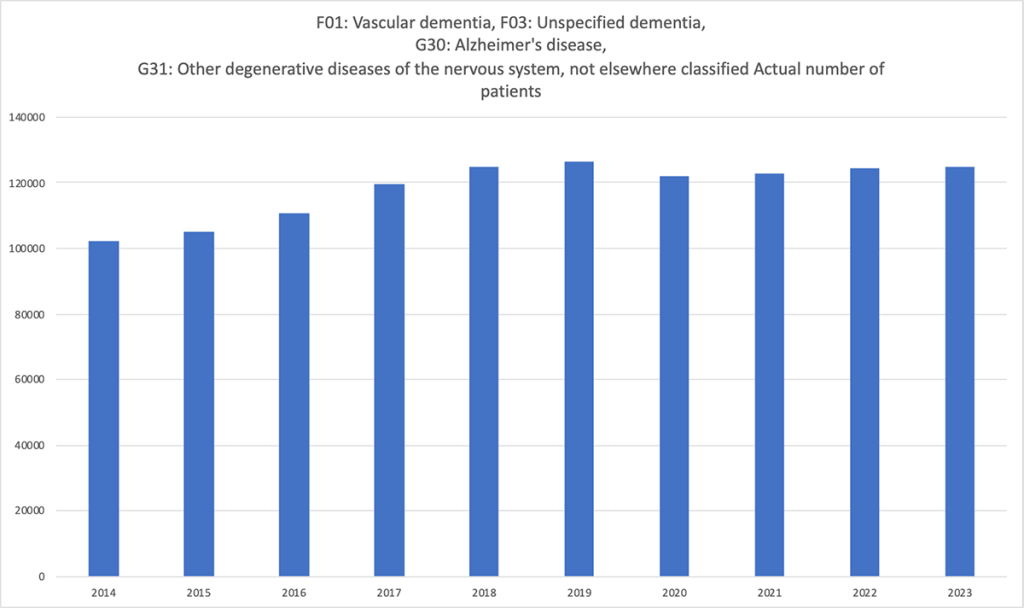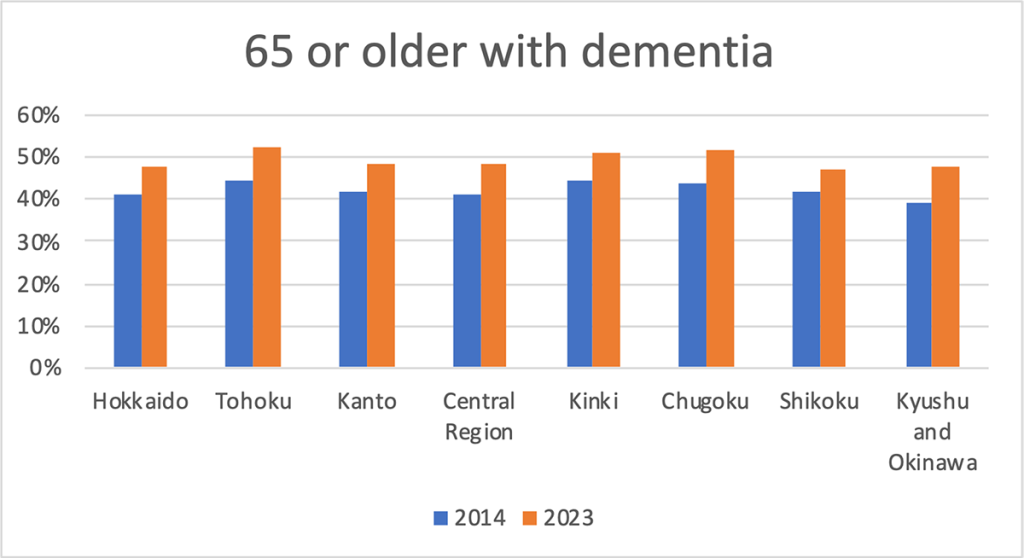
Trends in the number of dementia patients over the past 10 years and comparison of the elderly population by region, as well as survey of the implementation status for Lecanemab
ASeptember 21 (Saturday) is World Alzheimer’s Day.
September 21 is recognized as Alzheimer’s Awareness Day annually by the World Health Organization (WHO) and Alzheimer’s Disease International (ADI). To increase awareness of Alzheimer’s and dementia, several events are held in September in nations all over the world.
Recently, the Ministry of Health, Labor and Welfare approved lecanemab, a new medication for Alzheimer’s disease, in September 2023 in Japan. Donanemab, which has the same effect as lecanemab in eliminating the cause and slowing the progression of dementia, is anticipated to be officially approved in the near future. Based on MDV data, we thus examined the following trends: the percentage of patients 65 and older in eight regions; the number of hospitals offering “lecanemab” and the number of patients; a comparison between 2014 and 2023; and the number of dementia patients during the last ten years.
The number of dementia patients over the previous ten years was first trended using MDV data.

period : April 2014 to March 2024
Only hospitals with complete data for the specified month
Number of facilities that meet basic requirements: 197
The number of people with dementia has declined in 2020, presumably as a result of fewer patients entering hospitals as a result of the COVID-19 pandemic, but it is undeniable that the number of dementia patients is rising year.
Next, between 2014 and 2023, we compared the percentage of patients in eight locations who were 65 years of age or older.

Data period : April 2014 to March 2015 , April 2023 to March 2024
Only hospitals with complete data for the specified month
Number of facilities that meet basic requirements: 197
The highest prevalence is found in the Tohoku region, where the proportion of senior people is rising due to population aging and outflow of younger people. This could explain why the proportion of dementia sufferers is likewise high. Furthermore, it’s probable that the deterioration of regional communities and the isolation of the elderly are hastening the onset of dementia as depopulation and population decline.
Area composition division
[Hokkaido] Hokkaido
[Tohoku] Aomori Prefecture, Iwate Prefecture, Miyagi Prefecture, Akita Prefecture, Yamagata Prefecture, Fukushima Prefecture
[Kanto] Ibaraki Prefecture, Tochigi Prefecture, Gunma Prefecture, Saitama Prefecture, Chiba Prefecture, Tokyo, Kanagawa Prefecture
[Central Region] Niigata Prefecture, Toyama Prefecture, Ishikawa Prefecture, Fukui Prefecture, Yamanashi Prefecture, Nagano Prefecture, Gifu Prefecture, Shizuoka Prefecture, Aichi Prefecture
[Kinki] Mie Prefecture, Shiga Prefecture, Kyoto Prefecture, Osaka Prefecture, Hyogo Prefecture, Nara Prefecture, Wakayama Prefecture
[Chugoku] Tottori Prefecture, Shimane Prefecture, Okayama Prefecture, Hiroshima Prefecture, Yamaguchi Prefecture
[Shikoku] Tokushima Prefecture, Kagawa Prefecture, Ehime Prefecture, Kochi Prefecture
[Kyushu and Okinawa] Fukuoka Prefecture, Saga Prefecture, Nagasaki Prefecture, Kumamoto Prefecture, Oita Prefecture, Miyazaki Prefecture, Kagoshima Prefecture, Okinawa Prefecture
In order to determine how many hospitals and patients are utilizing lecanemab, which was recently approved last year, we lastly looked at the most recent data available from MDV.

It was found that both the number of hospitals and the number of patients are on the rise.
Note: This article was published on September 1, 2024.
Data survey and analysis tailored to your specific requests
Databases, data analysis requests, and more.
© Medical Data Vision Co., Ltd. All Rights Reserved.





